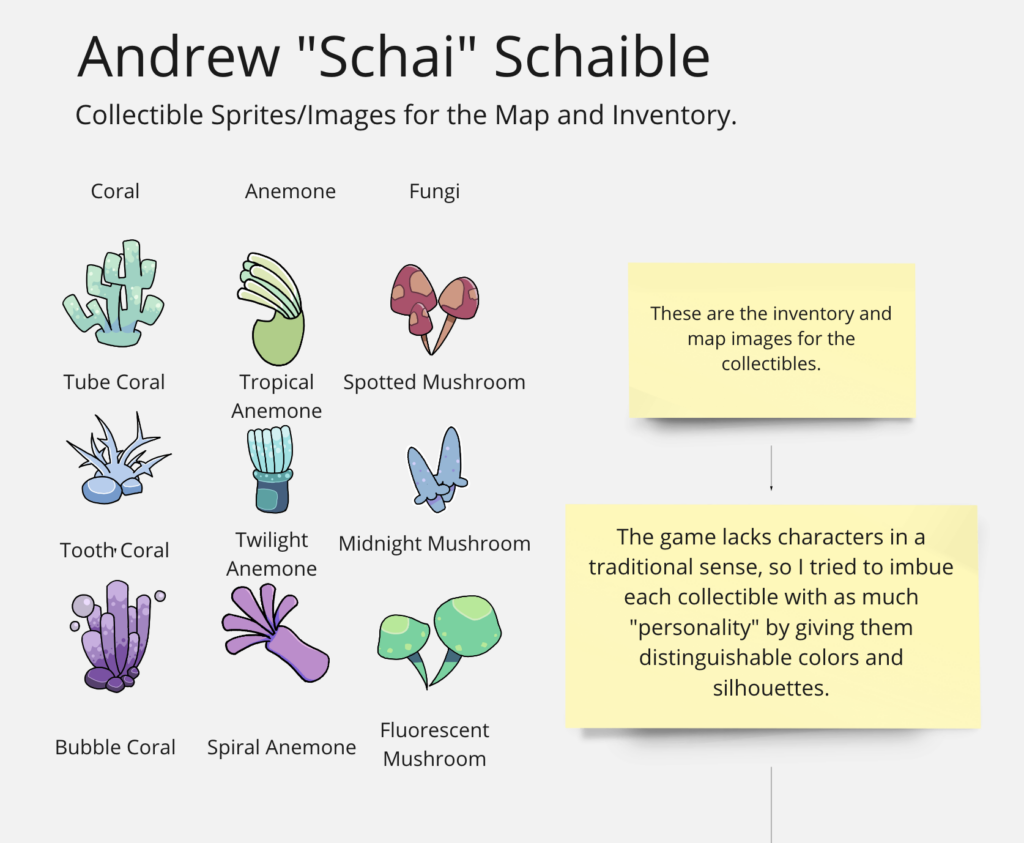
Background

Ocean Exploration Trust, headquartered in Narragansett, Rhode Island, and led by Dr. Robert Ballard, has a mission to explore the seafloor’s geology, biology, and archaeology. They use the exploration vessel Nautilus and deep sea remote-operated vehicles (ROV). This research is coupled with an educational mission through their online platform Nautilius Live.

The team’s media production specialist, Jonathan Fiely, believed an immersive game based on ROV technology could be useful for engaging digital natives. As a course designer, I recognized the potential of the challenge to engage programmers and simulation designers to understand (Bloom’s Level 2) software industry best practices through a high-stake application (Bloom’s Level 3).
The NEIT Video Game Design and Development program features a course called Serious Games (GDS 375) that explores these types of missions.
The experiential learning project is a multidisciplinary collaboration practice based on Agile Scrum project management. It highlights the scope of the development undertaken and the tangible value it provides.
Unfathomable Ideas

Making a game is always a challenge. Making a fun game designed to give middle-school students the transformative experience of deep-sea exploration could give anyone the bends. Our diverse group of programmers and asset designers needed to come up to speed with the OET mission, the technology, and the flora and fauna of the ocean in just one week. Next, they needed to “grok” the energy and attention span of middle-schoolers. Finally, they needed to design and prototype a replayable experience with some of the fidelity of a simulator while being abstract enough to be delivered as a web-playable game.
Choosing NEIT for this mission was a good move as the Alpha Gamma cohort had a good record of working as a large team delivering complex video game frameworks under insanely tight deadlines.
Don’t Speak!
A key design constraint of the project was to limit or eliminate the use of any written or recorded language in the game. The hope was a game that could be played anywhere in the world. Jonathan believed discovering the game mechanics could be as satisfying a mystery as exploring the ocean.

It would be difficult for a group of 20+ game designers to focus on the gameplay objectives, so a smaller group of designers sat down and ideated the game’s vision plan. The client offered feedback and technical knowledge as needed. A paper prototype was rendered to use as a pitch tool for the rest of the team. Once the concept was accepted, the team had seven weeks to make a playable game for a select group of Tween-agers.
The team practiced agile scrum and maintained a working prototype for each game iteration. If the prototype broke, the team would revert and repair it.
Treasure and Wrecks
Like the ocean floor, a project of this scope will produce some expectedly pleasing results. Time constraints, inexperience, and technical mysteries can produce some unexpectedly unpleasant results.

The team designed an abstract aesthetic that was part “gummy bear” and part “origami.” The purpose of this was to give the player practical context that was low-poly but fun. The user interface used the familiar features of driving games while also allowing the player to operate “grabbers” to pick up rocks and sea life. The gameplay mechanic combined a shadowy seeker game with a collection game. All of these elements tested pretty well through each iteration.

As with many large teams, miscommunications led to the pain points of the project. A designer made beautiful sponges that exceeded the target polygon count by about 1000%. A programming team lost track of the goal of a web playable game. As with many student projects, the weekly feature goals and deadlines proved too much for several team members.
The final playtest with actual middle-schoolers confirmed some of our hopes and some of our fears. The client learned a great deal about game development and feature creep.
All of the participants learned many lessons about expectations and promises.
Player-Centric Design!
A team project involving various stakeholders, such as the project owner, professor, and students enrolled in the course, was facing a critical challenge. The ‘ultimate player’ for whom the game was designed had the ultimate decision-making authority in determining the team’s priorities. During weekly scrums, it became apparent how team members could prioritize their personal preferences for features above the needs of the ‘ultimate player’. However, the team’s learning transformation occurred when they prioritized the player’s needs, which stimulated their progress.

Lo-Fi Prototype

Normally, it is considered standard operating procedure for the development team to create a low-fidelity (lo-fi) prototype of the video game concept. This allows the team to act out the beats of the game. This can be a very effective way for the engineers to spot scope and engagement issues before generating a lot of wasted code and assets. Due to the simple mechanics of the game, it was decided that a lo-fi digital prototype would prove our concepts without creating any significant tech debt. The user interface and symbology were the only elements that went through an extensive paper-prototype development stage.

What middle-schoolers think.
If you want to know if you have made an engaging game, ask a middle-schooler. They have opinions and are surprisingly candid.
We reached out to computer science teachers across our region and asked if they had a video game club or e-sports team that would review our digital prototype. We ended up with four really motivated seventh-graders who play-tested the game live on zoom with the developers.
They delivered live commentary as they played which gave the programmers and designers very useful notes on their work. The practice of game-testing is really what makes game-makers out of software engineers and asset developers. It’s a long process, but it is really the most important process in their career curriculum.
Epilog
The Serious Games and Simulation class is a ten week course. It scaffolds Bloom’s Taxonomy with Agile Scrum Game Development. The course itself is designed like a game and like a game it has the same critical objective – winning.
Every cohort undertaking the serious game challenge achieves tangible competitive growth in research, communication, and critical thinking. It’s a win for everyone.


